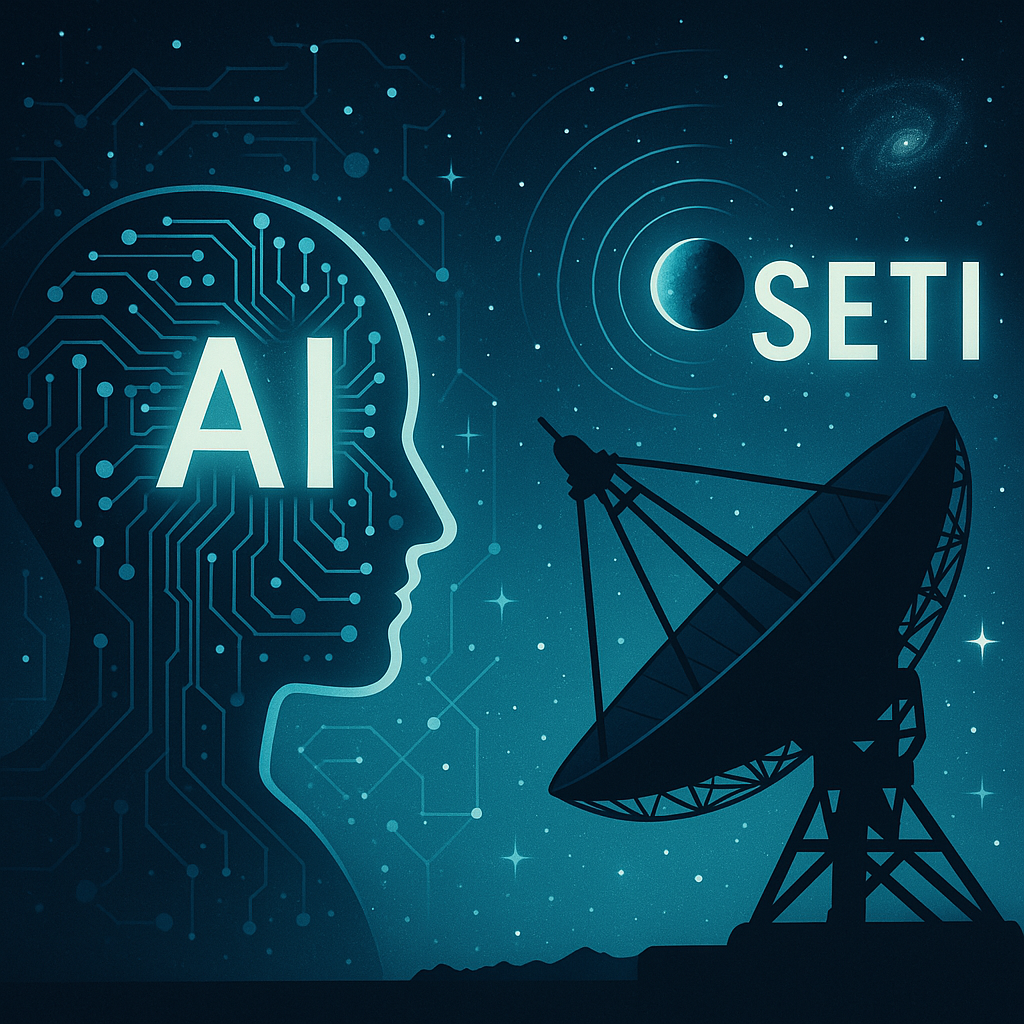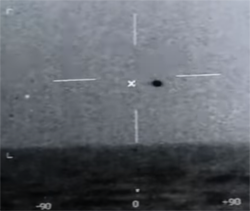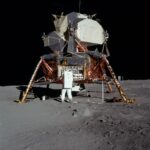The Search for Extraterrestrial Intelligence: A Journey into the Unknown and Within Ourselves
The search for extraterrestrial intelligence isn’t just a space endeavor—it’s a profound journey into the very heart of what it means to be human. It’s not only about pointing radio telescopes at the stars or analyzing strange signals from the cosmos; it’s about grappling with some of our most enduring questions: Who are we? Are we alone? What is our place in the vast expanse of the universe?

From the earliest moments of human history, our ancestors looked up at the night sky and felt a mix of awe, wonder, and mystery. They saw patterns in the stars, told stories of gods and celestial beings, and wove the heavens into their myths and cosmologies. This age-old curiosity has never faded—it’s only evolved. What was once the domain of myth is now the territory of science, with tools and technology replacing ancient lore.

Picture attributed to Zhang Sengyao painter (c490 – c540) showing the five visible planets and 28 constellations
As our understanding of the cosmos expanded, so did our yearning for connection beyond our pale blue dot. In the 20th century, pioneers like Frank Drake and Carl Sagan turned this yearning into a scientific

Frank Drake
Carl Sagan

Artists impression of Voyager in space.

Gold disc attached to Voyager 1 and 2.
endeavor. Drake’s famous equation gave us a framework for estimating the potential number of communicative civilizations in our galaxy, while Sagan helped bridge science and imagination, encouraging humanity to send our own greetings to the stars—like the Golden Record aboard the Voyager spacecraft.
Their efforts weren’t just technical feats; they were philosophical statements. They invited us to imagine not just the possibility of “the other,” but also to reflect on ourselves—our unity, our fragility, our shared hope. To wonder if someone else is out there is, in many ways, to better understand what it means to be here.
Curiosity is a powerful motivator, but the search for extraterrestrial intelligence (SETI) is built on a foundation of rigorous science and disciplined skepticism. Behind the romance of alien contact lies a hard truth: the universe is noisy, vast, and largely indifferent. Signals from intelligent life—if they exist—are likely to be faint, fleeting, and buried in a sea of cosmic static. Scientists must sift through petabytes of data, chasing anomalies that often turn out to be natural phenomena or human-made interference. It’s painstaking work, but the stakes make it worthwhile.
Skepticism is healthy—and necessary. Not everyone in the scientific community buys into the SETI effort wholeheartedly, and that’s okay. Science thrives on challenge, peer review, and robust debate. Still, the search continues, driven by a potent mix of hope, innovation, and sheer human determination.
Listening to the Cosmos: Methods and Technologies Behind SETI
If the universe is a cosmic symphony, our job is to find the right instruments to hear its most subtle notes. Over the decades, SETI has developed an arsenal of technologies and methods to listen for signs of intelligent life.

Greenbank Radio Telescope, USA

Very Large Array, New Mexico
Massive radio telescopes scanning the sky for intelligent signals
At the heart of this effort are radio telescopes—our interstellar ears. These massive instruments can capture radio waves emitted from across the galaxy. Facilities like the Green Bank Telescope in West Virginia and the Very Large Array in New Mexico are key players, scanning the skies with incredible sensitivity and precision. Though the Arecibo Observatory’s dramatic collapse in 2020 marked the end of an era, its legacy lives on in the new generations of instruments inspired by its groundbreaking work.
In 1977, a brief, unexplained signal from the constellation Sagittarius—now known as the “Wow! Signal”—lit up SETI researchers’ imaginations. Though it lasted just 72 seconds and was never repeated, it reminded us how tantalizingly close we might be to hearing from “someone else.”

Printout of the famous Wow! Signal detected in 1977
In addition to radio waves, scientists are now exploring optical SETI—searching for powerful bursts of laser light that might signal advanced civilizations. Laser SETI, with its ability to detect fast, bright flashes of energy, opens new frontiers in the search for non-radio communication, offering a broader spectrum to explore.

Visualization of optical SETI laser signals across stars
Teamwork is also reshaping the field. SETI is no longer a fringe science pursued by isolated researchers—it’s a global collaboration. Projects like Breakthrough Listen have united researchers, observatories, and institutions worldwide. By pooling data and sharing discoveries, we increase our odds of detecting something truly extraordinary.

Artificial intelligence analyzing cosmic signal data
And then there’s artificial intelligence. With modern AI and machine learning, researchers can comb through vast amounts of data faster and more efficiently than ever before. These tools can identify subtle patterns and anomalies that human eyes might miss, making them invaluable in the search for that one-in-a-billion signal.
Science, Secrecy, and Skepticism: Navigating the UFO Debate
While SETI operates with scientific rigor, the topic of UFOs—or UAPs (Unidentified Aerial Phenomena)—exists in a murkier space, where public fascination often collides with scientific caution.



For decades, reports of strange sightings in the skies have captivated the public imagination, spawning conspiracy theories, media spectacles, and heated debates. Places like Area 51 became cultural icons, shrouded in mystery and whispered legends about secret spacecraft and extraterrestrial visitors.
But behind the allure of aliens and cover-ups lies a more grounded reality. Many “UFOs” are later identified as experimental aircraft, weather phenomena, or misidentified celestial objects. The scientific community approaches these reports with a blend of curiosity and skepticism, demanding verifiable evidence before drawing conclusions. That doesn’t mean dismissing them outright—but it does mean applying the same standards of inquiry and evidence as any other scientific question.
Government disclosures in recent years—like the Pentagon’s release of military footage showing unexplained aerial encounters—have reignited interest and sparked new questions. While these incidents are intriguing, they remain unresolved rather than confirmed proof of extraterrestrial technology.
As thrilling as the possibility of alien visitations may be, it’s important to separate credible investigation from fantastical speculation. Conspiracy theories often thrive on gaps in knowledge and the allure of hidden truth, but they rarely hold up under scrutiny. Responsible science requires us to ask tough questions and remain open-minded—without jumping to conclusions.
What’s Next? The Evolving Frontier of SETI
The future of SETI is as exciting as it is uncertain. With every technological advance, we peel back another layer of the cosmic curtain.
New missions, like NASA’s James Webb Space Telescope and upcoming observatories such as the Square Kilometre Array (SKA), will offer unprecedented views into distant star systems. These tools won’t just help us search for intelligent signals—they’ll allow us to study exoplanets’ atmospheres, looking for chemical fingerprints of life.
As our ability to send and receive messages improves, we face serious ethical questions. Should we actively broadcast our presence to the stars? What responsibilities come with initiating contact? Some argue for caution, while others advocate for bold outreach. Either way, these are no longer purely academic debates—they’re ethical imperatives for a species on the cusp of cosmic communication.
The discovery of intelligent life, if it ever comes, would be one of the most transformative events in human history. It would reshape everything—our religions, philosophies, technologies, and global politics. It would force us to reconsider who we are, how we live, and what kind of future we want to build.
That’s why SETI isn’t just a scientific pursuit. It’s a deeply human one.
Progress will depend on cross-disciplinary collaboration—astronomers working alongside chemists, computer scientists, linguists, ethicists, and philosophers. Only by pooling our knowledge can we hope to solve this most profound puzzle.
In the end, whether we find intelligent life or not, the search itself is a reflection of our species’ greatest traits: curiosity, imagination, persistence, and a deep yearning for connection. Looking out into the universe, we may just find a better understanding of ourselves.



